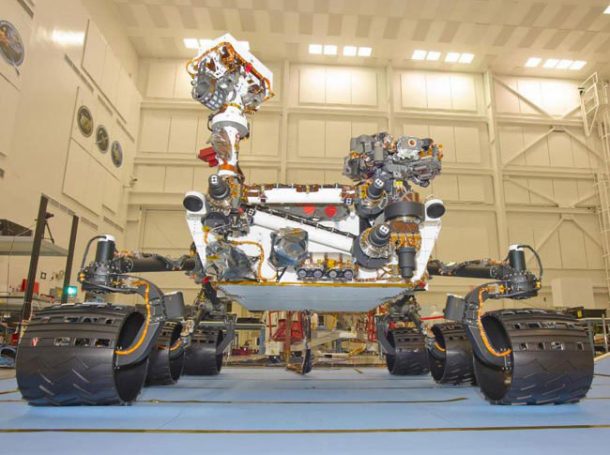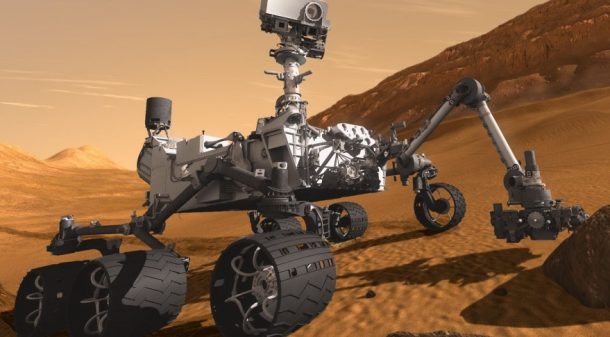The Mars 2020 mission has NASA excited for the launch in July 2020 and the space agency has entered the Assembly, Test, and Launch Operations (ATLO) phase. This phase is being carried out at the Spacecraft Assembly Facility High Bay 1 at the Jet Propulsion Laboratory (JPL) in Pasadena, California. This will comprise of the final assembly and electrical integration of flight hardware into the spacecraft’s rocket-powered sky crane descent stage, Mars rover, cruise stage and aeroshell.
It is scheduled to arrive at Mars in February 2021. Mars 2020 is the latest mission in NASA’s Mars Exploration Program and has the main objective of visiting areas that were once habitable and to collect and analyze soil and rock sample for chemical biosignatures. Some of these samples will be stored in the hopes of bringing them back to Earth in future missions.

The rover’s design is an upgrade to the predecessor Curiosity rover currently exploring the surface of Mars. It is similar to the Curiosity rover in terms of the chassis and undercarriage, but the wheels have been improved for greater durability. It will be using a plutonium-fueled nuclear radiothermal generator as a power source, the same as the Curiosity rover.
NASA claims that even though Mars 2020 rover is the size of an SUV, its construction is carried out by the whole world. “Parts of this mission are coming from the other side of the world, and some are coming from just ‘down the street’ in Pasadena, and some are coming from literally down the street – a couple of buildings away,” says David Gruel, ATLO Manager for Mars 2020 at JPL. “Right now we are working the descent stage, and by Fall we expect to be working on the rover itself.”

It is exciting to see another mission for Mars and it will serve as a predecessor to future missions to Mars, some of which are planned to be manned missions.


